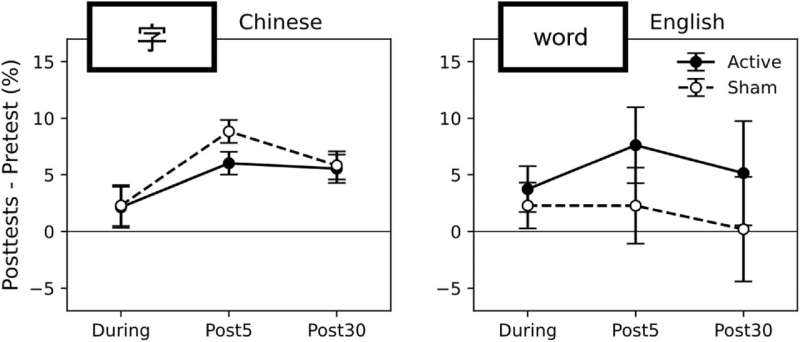Brain stimulation found to improve reading ability in macular degeneration patients

A new study is the first to show brain stimulation improves reading in patients with macular degeneration.
Drug treatments only slow down the progression of the disease, but Waterloo scientists discovered they could train the brain to use the information it receives more efficiently.
Transcranial direct current stimulation (tDCS) is a non-invasive, painless brain stimulation treatment that uses direct electrical currents to stimulate specific parts of the brain. Researchers stimulated the visual cortex to help the brain to use the information it receives from the eye as efficiently as possible.
"This finding is exciting because this is the first study to demonstrate brain stimulation in patients with macular degeneration had a positive impact on an important real-world skill like reading," said Andrew Silva, a postdoctoral fellow in Waterloo's School of Optometry and Vision Science.
Patients with macular degeneration can develop blurred or no central vision, which is the part that allows a person to see fine details and high resolution. As a result, they rely on the low-resolution vision from their periphery, which makes tasks like reading very difficult.
Participants in the study were presented with 30 sentences, one word at a time. Then the 20-minute stimulation began while participants read 30 additional sentences word by word. Reading accuracy was evaluated immediately, five and 30 minutes later. Participants reading accuracy improved at all time intervals after stimulation.
A parallel study conducted at Hong Kong Polytechnic University used the same methodology, except participants read one Chinese word instead of one English word. Surprisingly, the reading skill of participants in the Hong Kong study did not improve with the stimulation like those in the Canadian study.
The researchers suspect the differences between the studies highlight the intrinsic differences between the writing systems. For example, in English, words are comprised of multiple letters, but in Chinese, one word can be represented by a single character.
The letters within the English word crowd each other, making it difficult to correctly identify the word with peripheral vision. Brain stimulation is known to release this crowding effect. However, since the Hong Kong study presented one character at a time, there was no between-character crowding to release.
"We hypothesized that brain stimulation should improve peripheral reading by releasing the visual crowding induced by the side-by-side letters within a word. This worked out in the English-reading cohort, but not in the Chinese-character-reading cohort," said Dr. Ben Thompson, a University Research Chair and professor in the School of Optometry and Vision Science.
Their research was published in Brain Stimulation.
Next, the team is assessing the impact of long-term tDCS stimulation on English reading skills, with an eye towards long-term reading improvements
"The fact that we demonstrated an acute effect is very exciting for the possibility of creating longer-lasting effects," Silva said.
More information: Andrew E. Silva et al, A differential effect of visual cortex tDCS on reading of English and Chinese in patients with central vision loss, Brain Stimulation (2022). DOI: 10.1016/j.brs.2022.08.016



















